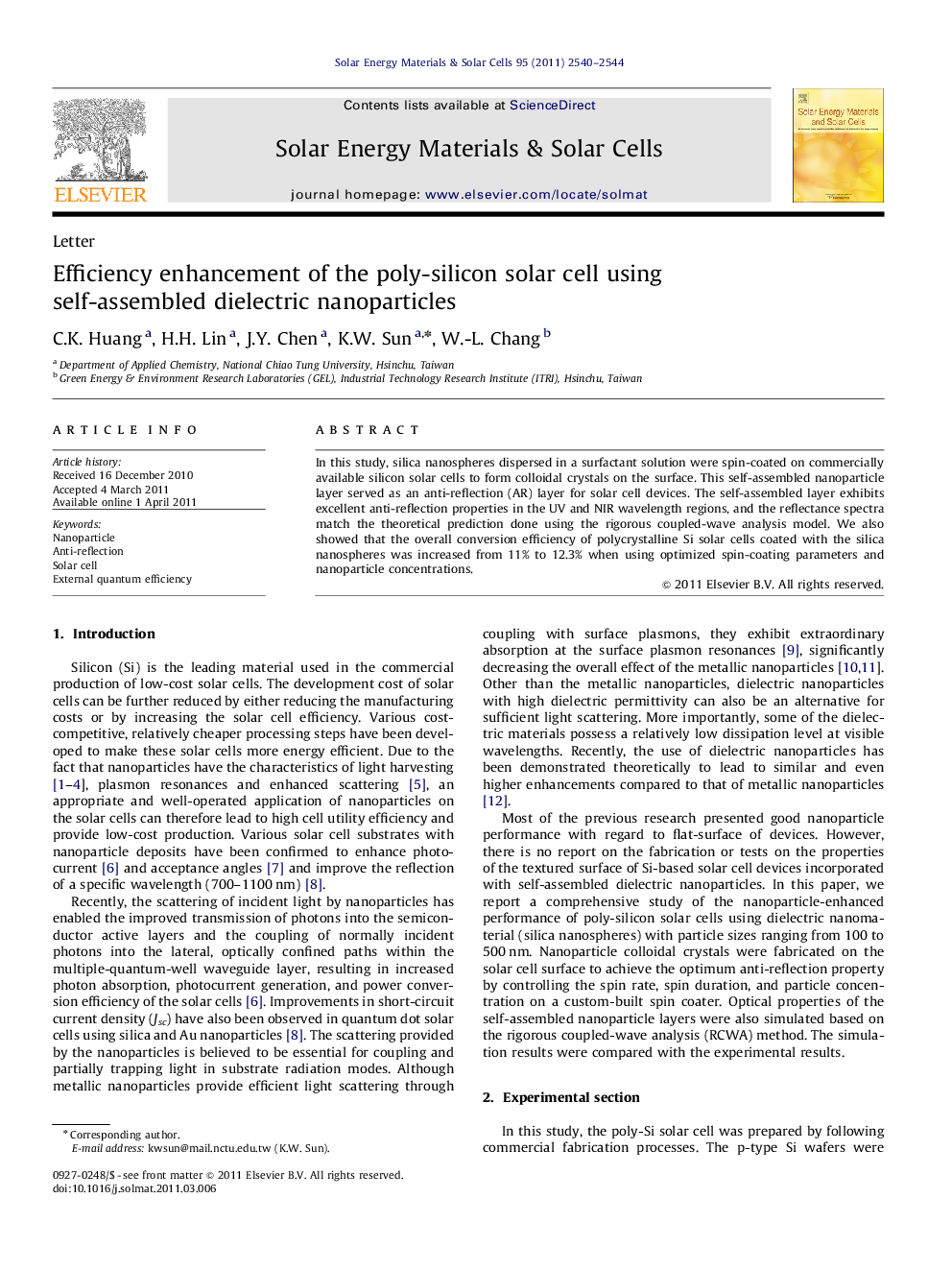| کد مقاله | کد نشریه | سال انتشار | مقاله انگلیسی | نسخه تمام متن |
|---|---|---|---|---|
| 78819 | 49342 | 2011 | 5 صفحه PDF | دانلود رایگان |

In this study, silica nanospheres dispersed in a surfactant solution were spin-coated on commercially available silicon solar cells to form colloidal crystals on the surface. This self-assembled nanoparticle layer served as an anti-reflection (AR) layer for solar cell devices. The self-assembled layer exhibits excellent anti-reflection properties in the UV and NIR wavelength regions, and the reflectance spectra match the theoretical prediction done using the rigorous coupled-wave analysis model. We also showed that the overall conversion efficiency of polycrystalline Si solar cells coated with the silica nanospheres was increased from 11% to 12.3% when using optimized spin-coating parameters and nanoparticle concentrations.
Figure optionsDownload as PowerPoint slideHighlights
► This work provides a simple and truly economic way to boost the conversion efficiency of commercially available poly-silicon solar cells.
► Surface reflectance in UV and NIR is reduced with a layer of close-packed silica nanoparticles using a spin-coating technique.
► Optical properties of the self-assembled nanoparticle layers are simulated based on the rigorous coupled-wave analysis (RCWA) method.
Journal: Solar Energy Materials and Solar Cells - Volume 95, Issue 8, August 2011, Pages 2540–2544